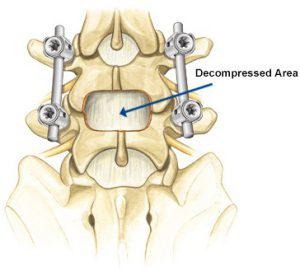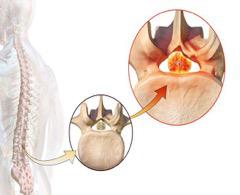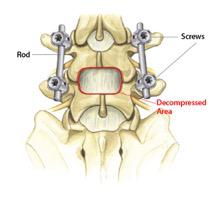What is Decompression and Spine Fusion?

Lumbar spinal stenosis is are a frequent cause of low back and leg pain and adult disability and are frequently caused due to spondylolisthesis. The spinal decompression procedure removes compressive structures such as flavum and lumbar facet osteophytes from the hypertrophic ligament. The aim of the procedure is to reduce neural compression (decompression) and to strengthen the spine (fusion) in chosen individuals in order that reciprocal compression and recurring diseases can be prevented.
What are the symptoms leading to the doctor’s recommendation – Decompression and Spine fusion?
- Extreme back pain
- Weakness
- Numbness
- Incoordination
- Pressure in the neck
Evaluations for Decompression and Spine fusion
- X-rays
- MRI
- CT scan
Treatment for Decompression and Spine fusion
- Spinal Decompression – Spinal decompression may be a common operation that the doctor may suggest if conservation therapies such as on-the-counter drugs and injections of epidural steroids have not provided sufficient relief. If other measures do not work, the doctor may recommend surgical decompression of a spine for bulging or broken disks. In the course of the procedure, the surgeon creates a tiny incision over the impacted region of the spine and extracts the region that is misaligned and the nerve root is compressed, without any muscle or tissue passing through.
- Spinal Fusion – Spinal fusion procedures are conducted in people with back pain when other non-operative techniques have failed to relieve the pain. They are also effective in the treatment of a variety of spinal problems including herniatic disks and degenerative disk disorders, as well as in the combination of other minimally invasive procedures such as Anterior lumbar interbody fusion (ALIF). They may be able to correct a number of spinal disorders, including narrowing of the spinal canal, and spinal compression and fractures. If a spinal fusion qualifies as a minimally invasive procedure, the surgery starts with small or narrower incisions to achieve the wounded region — without the need for subsequent stitches to be removed. All muscles and tendons will be moved to the other side rather than cut, as in the case of an opened procedure. Fusion connects bone to bone graft or other artificial material.
Estimated Costs
| Hospital | City | Cost of Investigations | Cost of Surgery |
| Artemis Hospital | Gurugram | USD 600 | USD 7200 |
| Jaypee Hospital | Greater Noida | USD 600 | USD 7800 |
| BLK Super Speciality Hospital | New Delhi | USD 600 | USD 7800 |
| W Pratiksha Hospital | Gurugram | USD 600 | USD 6800 |
| Apollo Hospital | Chennai | USD 600 | USD 8400 |
| Global Hospitals | Bangalore | USD 600 | USD 7800 |
| Sharda University Hospital | Greater Noida | USD 600 | USD 6600 |

















